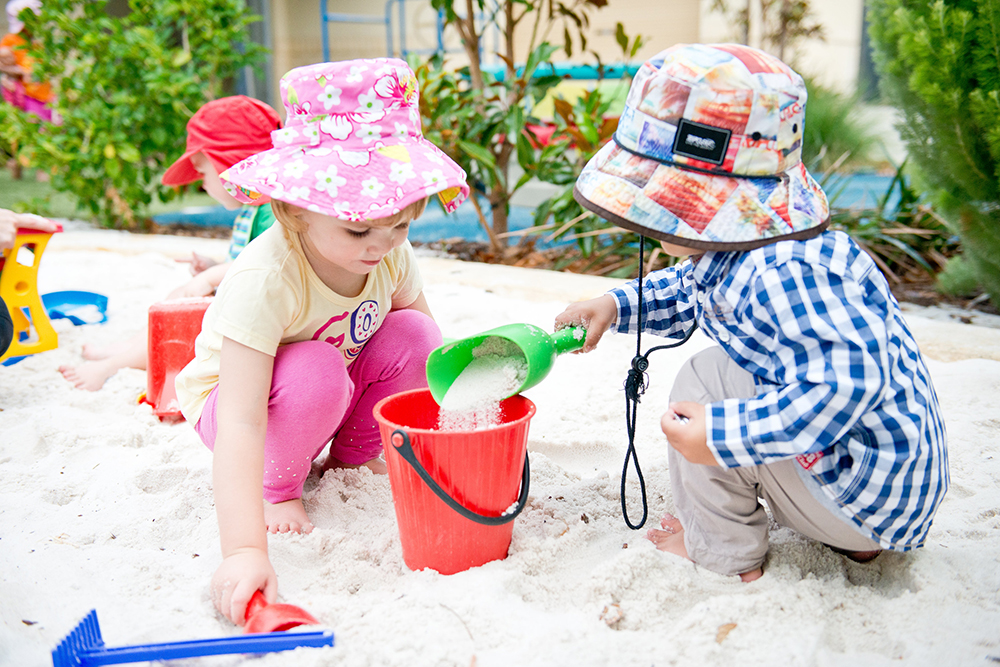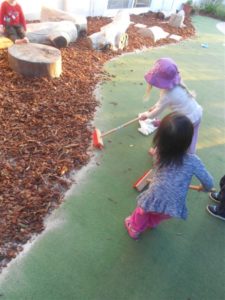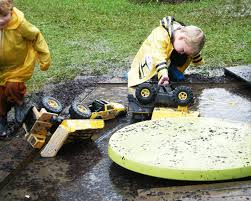What do these 3 words in our title mean?
Investigation – to look into the actions of someone or something – a formal or systematic examination
Risk-taking – engaging in activities that involve danger or risk in order to achieve a goal
Stimulating – encouraging interest or enthusiasm
We as educators need to make sure we make the best use of what we have to assist children in developing these skills. We are very lucky in Australia to have wonderful outdoor environments that can assist our educators to provide the children with plenty of opportunity to learn and grow. Within the Reggio Emilia Approach the environment also plays a very big role in children’s education
The principle of environment as the third teacher can and should be applied just as readily outside as inside by placing value on aesthetics, organization, thoughtfulness, provocation, communication and interaction.
The care and attention we pay to organising space outdoors stimulates children’s s imagination, creativity, exploration, discovery, engagement and sense of wonder.
What we include in our outdoor environment to stimulate and allow for investigation and risk taking?
- water
- vegetation, including trees, bushes, flowers, bark, branches
- animals
- sand, best if it can be mixed with water – burry items deep in the sand to allow for exploration and discovery
- natural color, diversity and change
- mud patches
- places and features to sit in, on, under, lean against, and provide shelter and shade
- different levels, nooks and crannies, places that offer privacy and views
- structures, equipment and materials that can be changed, actually or in the children’s imaginations, including plentiful loose parts such as logs, stumps, boulder, fabrics, blankets, ribbons, tunnels
- musical instruments
- labyrinths, mazes and totem poles
- areas that are beautiful and aesthetically pleasing
- quiet spaces
- areas to stimulate all senses – smell; touch; hearing; sight and taste







Recent Comments